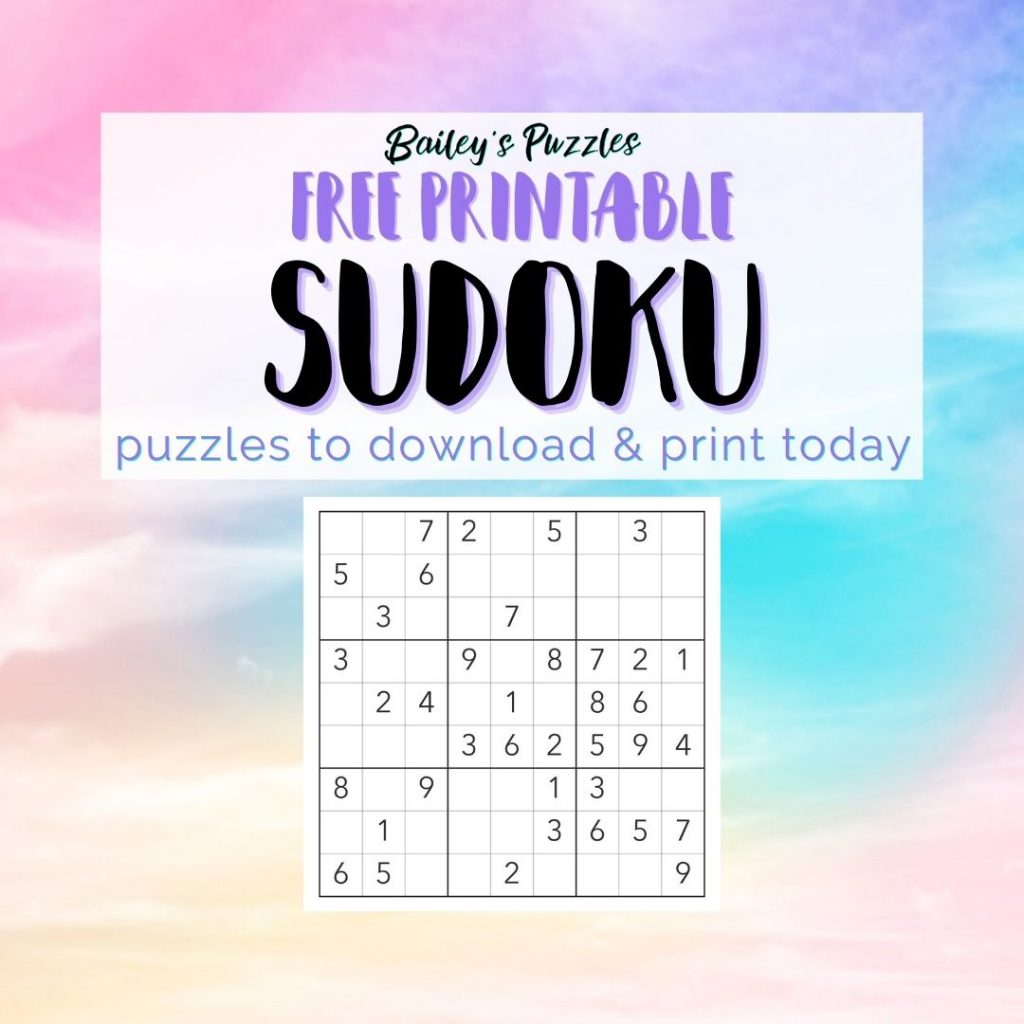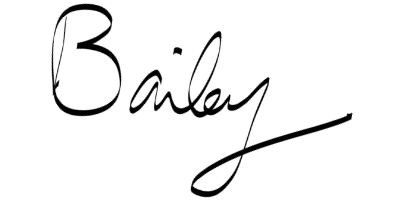This post may contain affiliate links. This means Bailey’s Puzzles might receive a commission on the sale of certain items. This is at NO additional cost to you. Visit the policies page to learn more.
Are you a big fan of sudoku? Or maybe you don’t like it all that much? Either way, if you’re looking for something sudoku-like I’ve got the perfect puzzle for you. Check out these 9+ sudoku variations PLUS get 5+ sudoku-like puzzles and games.
What is Sudoku?
Sudoku is a logic puzzle played on a 9×9 grid. Within the grid is 9 large squares (3×3 each), 9 rows (9×1 each), and 9 columns (1×9 each). Each square, row, and column needs to contain the numbers 1 through 9.
Sudoku can range from very easy (many of the numbers filled out at the beginning) to extremely hard (few numbers filled out at the beginning and requiring many special strategies to complete).
Want to know more? Check out How to Play Sudoku for solving tips & techniques and a complete example.
Play Sudoku:


Sudoku Variations
There are a lot of sudoku variations that are still fundamentally sudoku but they have added steps, parts, requirements or something. Check out these 9+ sudoku variations!
Other Sizes of Sudoku & Wordoku
The standard sudoku puzzle is a 9×9 grid but sudoku puzzles can come in other sizes.
One common variation is the mini sudoku puzzle (usually 6×6). This is a popular size for children or beginners because it’s easier to solve.
Sudoku puzzles can also be larger. Often, puzzles larger than 9×9 will use letters instead of numbers (and can be referred to as Wordoku).
X-Sudoku-X (aka Sudoku-X)
X-Sudoku is a sudoku variation that adds to the challenge of a regular sudoku puzzle. You can tell it’s a Sudoku-X because there will be a shaded X on the grid.
It’s played on a 9×9 grid and in addition to the regular rules, there are 2 diagonal lines (forming an X) that must contain the numbers 1-9.
Hyper Sudoku (aka NRC Sudoku, Windoku, or 4-Square Sudoku)
Hyper Sudoku is also a variation that adds to the challenge of a regular sudoku puzzle. On a hyper sudoku puzzle you’ll notice 4 additional shaded boxes of 9 squares each.
Hyper sudoku is also played on a 9×9 grid and in addition to the regular rules, the 4 shaded boxes must each contain the numbers 1 through 9.
Dot Sudoku (aka Center Dot Sudoku or Dots Sudoku)
Dot Sudoku is another variation that makes a regular sudoku puzzle more challenging. On a dot sudoku puzzle, you’ll see shaded boxes equal to the number of unique numbers (for example, a 9×9 grid will have 9 shaded boxes).
Dot Sudoku can be played on a grid of any size and in addition to the regular rules, the shaded boxes must also contain one of each unique number.
Odd-Even Sudoku
Odd-Even Sudoku is another variation of sudoku that adds to the regular puzzle. On an odd-even sudoku puzzle some of the boxes will be shaded. Which ones? Odd ones OR even ones and it can be ALL the odd (or even) or just some of them.
Odd-Even Sudoku can be played on any size grid and in addition to the regular rules, the shaded boxes must all contain only odd or even numbers.
Nonomino Sudoku (aka Chaos Sudoku, Squiggly Sudoku, or Jigsaw Sudoku)
In a Nonomino Sudoku puzzle, the traditional 3×3 squares are gone. Instead, there are 9 areas of differing shapes.
The rules are the same as standard sudoku – but instead of a 3×3 square having one of each number, each random shaped area must have one of each number.
Note: this is not the only type of sudoku that is sometimes called “Jigsaw Sudoku.” The next variation sometimes goes by that name as well!
Tetridoku (aka Tetris Sudoku or Jigsaw Sudoku)
Tetridoku is a type of sudoku puzzle where you’re given the numbers in tetrominoes* to the side of the grid. You must then fit those tetrominoes into the grid.
Tetridoku can be played on any sized grid and follows the same rules as standard sudoku. The tetrominoes can be rotated in any direction to “place” them into the grid. The grid may contain highlighted areas to show you what direction pieces fit (or it may not).
Tetridoku tetrominoes may or may not be numbered.
*a tetromino is a geometric shape composed of four squares, connected at the edges.
One time I bought a book of these (in an airport maybe?) and they were so fun and challenging. However, I have been unable to find any ever again. Making a book of these is on my to-do list though so stay tuned!!
Samurai Sudoku (aka Gattai)
Samurai Sudoku takes 5 sudoku grids and puts them together in an X shape. The middle grid connects to each of the other grids by one 3×3 box.
Samurai Sudoku follows all the normal rules of sudoku for each of the 5 9×9 grids.
Greater Than Sudoku (aka Futodukus)
Greater Than Sudoku is a combination of Sudoku and Futoshiki (a sudoku-like puzzle I’ll tell you about in the next section).
Greater than Sudoku is typically played in a 9×9 grid and follows the same rules as Sudoku and includes >< symbols between some boxes to indicate which should contain a larger number.
Killer Sudoku
Killer Sudoku is a combination of Sudoku and Kakuro (a sudoku like puzzle I’ll tell you about in the next section).
Killer Sudoku is typically played on a 9×9 grid and follows the rules of sudoku PLUS it has cages that must add up to the number given at the top-left of that cage (from the game Kakuro).
Sudoku Like Games & Puzzles
There are a lot of sudoku-like games and puzzles that are still similar to sudoku but aren’t quite sudoku. They’re a great way to add some variety to your puzzling. Check out these 5+ sudoku-like puzzles and games!
Kakuro (aka CrossSums)
This is one of my favorite logic puzzles. It requires a little bit of math (but just some basic addition) and a lot of logic.
A kakuro puzzle looks a lot like a crossword puzzle. Except instead of filling in words, you fill in numbers (1 through 9 can be used) to total the number given at the top of the column or left of the row. No number may be used in the same block more than once.
Kakuro is often considered to be a harder version of Sudoku (and when they’re combined, you get Killer Sudoku as described above).
Futoshiki
If Kakuro is one of my favorite logic puzzles, Futoshiki is one of my least favorite. That’s just my preference, you mighth love futoshiki!
Futoshiki is played on a square grid. Each square in each row and column are filled with a number between 1 and the grid’s size. No row or column can contain the same number more than once.
Placed on the grid are > and < symbols (greater than and less than). This tells you if the numbers on either side of the symbol are smaller or larger than each other.
Calcudoku (aka KenKen)
I couldn’t decide if Calcudoku is a sudoku variation or if it’s a sudoku like puzzle. I’m still not really sure, but I’ve put it here in the “similar to” list.
Calcudoku can be played on a grid of any size (although 9×9 is the most common).
Like Sudoku, every row and column must have one of each unique number.
Unlike sudoku, there aren’t any squares inside that must be filled with each unique number. Instead, there are cages with a number and a math symbol. Each cage must contain numbers that combine to the total by using the given math operation.
Nonograms (aka Picross or Griddlers)
Nonograms are picture puzzles on a grid. The left and top contain numbers that represent which boxes should be filled in. Once you’ve filled in all the correct boxes, you’ll have a picture.
Nonograms are a bit different than Sudoku but they are a logic puzzle that requires many of the same skills as sudoku.
Minesweeper
Minesweeper is played on a grid. I remember it best as an old-school computer game where the grid was blank and you clicked until you found some numbers, then you had to decide which squares were mines (and marked with a flag) and which squares were safe to click.
Minesweeper isn’t just for computers. You can get paper minesweeper books that show you all the numbers and you have to figure out which squares are filled with mines and which are empty.
Nurikabe (aka Cell Structure or Islands in the Stream)
Nurikabe reminds me a lot of minesweeper.
You’re given a grid of squares and some of those squares have numbers in them. For Nurikabe, each number represents an island (and the numbered square is part of the island). You have to figure out which blocks are island and which blocks are sea.
A Sudoku Variation for Everyone
Which sudoku variation or sudoku-like game/puzzle is your favorite? Share it in the comments below.
Happy Puzzling,


Check out one of these next:
Or buy a book of puzzles…























